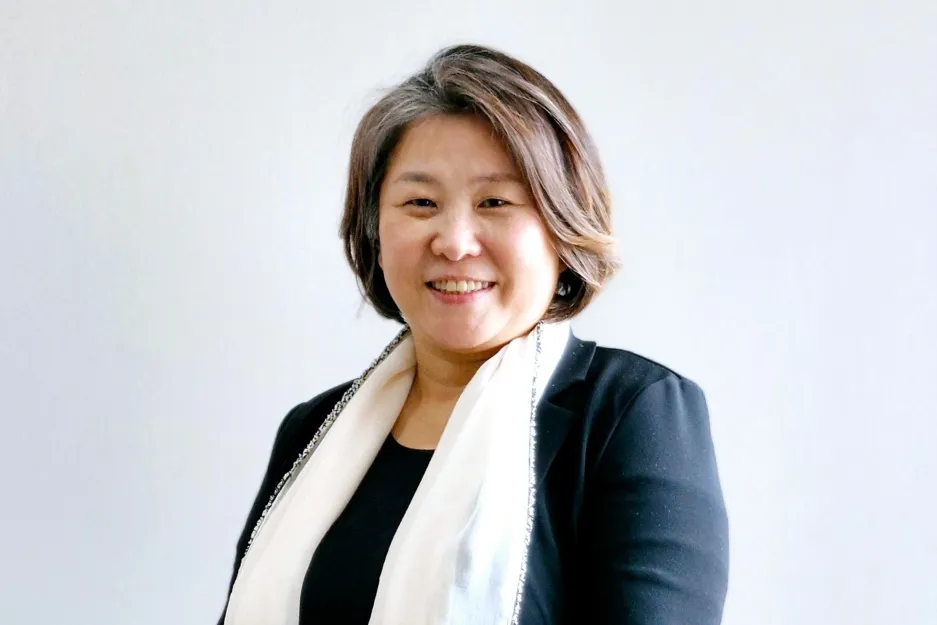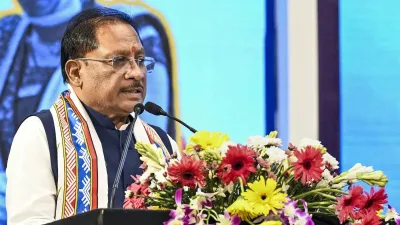
Busan’s industry platform, Asian Contents & Film Market (ACFM), is launching several new programs this year, through which it aims to tackle the many opportunities and challenges facing Asia’s film and TV industries head on.
The market, which is celebrating its 20th edition this year, usually pulls in around 2,700 industry professionals for a series of programs including the sales market and exhibition booths, the Busan Story Market (BSM), showcasing original IP, Asian Project Market (APM), funding initiative Asian Cinema Fund (ACF) and networking programs Producer Hub and Platform Busan.
The year, ACFM is expanding further by launching ‘The A’, comprising a wide-ranging report and summit on trends shaping the Asian film industry; Doc Square, a networking program for documentary filmmakers, producers and distributors; and InnoAsia, a new conference exploring the convergence of technology and content creation.
Asia’s film and TV industries are all at vastly different stages of development, but all are grappling with issues around slow box office recovery (with the exceptions of Indonesia and Vietnam), the shift to streaming, impact of new technologies such as AI, and lack of standardised data collection. Unlike Europe, there are few pan-regional organisations that can help coordinate an appropriate industry response.
The A Summit aims to address some of these issues by bringing together policymakers and industry leaders to discuss how to strengthen collaboration in the region, as well as look at the current state of data collection and standardization methods in Asia. Speakers include representatives from KOFIC, TAICCA, Thai Film Archive, Indonesia’s Cinepoint and JAFF Market, TIFFCOM and Red Sea Souk. The A Report has collected and analyzed film industry data from multiple territories across the region.
InnoAsia has drawn tech leaders such as Google Cloud, AWS, Megazone Cloud; Chinese AI companies including Kling AI, PixVerse and Bytedance’s Dreamina AI; Korean creatives and agencies, and startups from across the region. Deadline sat down with ACFM director Ellen Y.D. Kim to find out more about what these new programs will offer.
ACFM is running September 20-23 at BEXCO, during Busan International Film Festival (September 17-26).
DEADLINE: ACFM has lots of new programs this year – can you share more about ‘The A’ in terms of the ground it will cover and what you’re hoping it can achieve.
ELLEN YD KIM: For me, The A is about laying the groundwork for genuine collaboration across the Asian film industries. And that groundwork begins with sharing data – about our markets, success stories, co-production environments, and forward-looking trends. If we can collect, analyze, and share this information, we create a common language for cooperation.
We also hope it will inform policy. By connecting with national film agencies, we want to see whether the cooperation models we’re suggesting – say, co-production funds or standardized industry data – can be integrated into real policy frameworks.
The name ‘The A’ itself embraces Asia, Alliance, Analysis, Agent, and Art. Ultimately, we’d like it to become a brand that symbolizes ACFM’s leadership in fostering shared prosperity for Asian cinema. The A Report won’t just be statistics; we aim to provide country-by-country insights into structures, policies, and industry trends. And our long-term goal is to make The A Summit a regular leaders’ forum that anchors this dialogue.
DEADLINE: What was the thinking behind launching a separate program for Asian documentaries, Doc Square?
KIM: Through BIFF & ACFM’s Asian Cinema Fund, particularly AND (Asian Network of Documentary), we’ve supported Asian docs for many years. But in truth, the industrial linkages have been weaker than they should be. Asian documentaries have always received high artistic and social recognition, but in terms of market structure and distribution, the foundation is still fragile.
Doc Square was designed precisely to strengthen that link – creating a platform that connects festivals, distribution, funding mechanisms, and eventually sales, so that Asian documentaries can sustain both their artistry and their industry base.
DEADLINE: Will InnoAsia be addressing sensitive tech-related issues such as potential job losses in the Asian content industries due to AI?
KIM: The debate around AI is often split: efficiency gains on one side, job losses on the other. At ACFM, we want to go a little deeper. We’re focusing on the new opportunities AI opens up, not just the fears it creates. Technology will move forward regardless – it’s up to us to understand it early and help guide the industry in a constructive direction.
Governments and investors are already pouring money into AI. Our job is to make sure those resources are directed where they’re really needed. Of course, certain jobs may decline, but at the same time, entirely new roles are emerging. In practice, we’ve already seen AI boost efficiency in scriptwriting, marketing, editing – freeing creators to concentrate on the more imaginative, human parts of storytelling.
To me, the bigger risk isn’t job loss but the glut of mediocre content flooding the market. High-quality, artistically driven work is something AI still can’t replace. So at ACFM, rather than dwelling on the negatives, we want to ground the debate in data and real case studies – highlighting how AI can spark innovation while keeping artistry at the center.
DEADLINE: How are ACFM exhibitor numbers tracking compared to last year? Which territories are showing the strongest interest?
KIM: We’re already ahead of last year in booth sales. Participation from Korea, Japan, Taiwan, Hong Kong and Southeast Asia is especially strong. Participation from Europe and North and South America is growing. We’re also seeing new interest from Central Asia and Africa. Importantly, Chinese companies are returning – which feels like a very encouraging
signal.
What’s interesting is the shifting balance: the share of traditional sales companies is smaller, while national pavilions and InnoAsia booths are growing. That reflects how the market is diversifying – beyond completed sales into IP trading, cross-industry partnerships, and tech-content convergence.
The national pavilions remain crucial, showcasing each country’s content and industry strengths. InnoAsia highlights AI, big tech and startups. Put together, ACFM is evolving into a comprehensive platform where sales, IP discovery and coproduction, promotion, networking, and innovation all interact. So yes, the sales business is coming back, but the market’s role is broader now – it’s about positioning industries, building collaborations, and creating momentum for the future.
DEADLINE: How is the Korean industry reacting to the success of KPop Demon Hunters? As the film draws heavily on Korean culture but wasn’t made by Korea – has it prompted some soul-searching?
KIM: I’d say it’s been both pride and reflection. On one hand, it proves just how powerful Korean culture has become as a global story asset. On the other, it challenges Korean creators to ask: how do we take the lead in turning our own cultural resources into global projects?
There’s pride in seeing such global resonance, but also frustration that the benefits don’t necessarily flow back into the Korean industry itself. With Netflix and similar platforms, the scale of simultaneous global release brings extraordinary ripple effects – memes, fandoms, and cultural spillover. K-food and tourism are likely to reap immediate gains. And in that sense, yes, we even owe thanks to the overseas creators for amplifying Korean culture.
But for the Korean content industry, the lesson is clear: we can’t stay locked into a domestic mindset. We need to look seriously at global production and investment mechanisms, and be very careful about IP. Too often, future value gets traded away cheaply for short-term returns. KPop Demon Hunters is a reminder that global opportunity is real, but so is the risk of missing out if we’re not proactive.
DEADLINE: How do you feel the administration of Korea’s new president Lee Jae Myung can support the Korean content industries?
KIM: When the government recently rolled out its ‘K-Initiative’, I was struck that film wasn’t explicitly included. For decades, film has been a front-line ambassador for Korean creativity and soft power – so leaving ‘K-Movie’ out feels like an oversight.
I’d highlight three urgent issues. First, we must update the legal definition of film. Right now, it’s tied narrowly to theatrical release, but that excludes OTT, digital distribution, immersive storytelling, and new formats. Broadening this definition would allow us to redesign funding, revenue-sharing, and copyright frameworks in a way that reflects today’s reality.
Second, the imbalance with global platforms needs addressing. Netflix, for example, has absorbed much of our top talent, while most of the profits flow overseas. Korea contributes creatively, but the domestic ecosystem doesn’t get enough in return. Some form of redistribution – where digital platform revenues also cycle back into the local film industry –is essential.
Third, our institutions need restructuring. The Korean Film Council (KOFIC) should be empowered to cover digital and innovative storytelling, perhaps by taking on parts of the Creative Content Agency (KOCCA)’s remit. But simply adding a bit of budget won’t solve the problem – we need a sequence of reforms: redefine film legally, adjust the policy framework, and then reset the institutional role accordingly.
France’s CNC offers useful models: taxes on streamers, regional cinema policies, screen-quota protections, mandatory broadcaster investment. Korea needs its own version, rooted in the recognition that cinema is not just an industry but also a public asset with symbolic and cultural weight.
And one last thought: I do worry when I hear the government frame the sector only in terms of trillions of won in market size. If that’s just about short-term ROI, it’s risky. Film is not just a profit center – it’s cultural marketing for the entire nation, driving tourism, exports, and soft power. The real priority should be people: nurturing creators, protecting small and mid-size producers, and ensuring that making films is still a viable livelihood. That’s the only way to keep the ecosystem diverse and sustainable in the long run.



